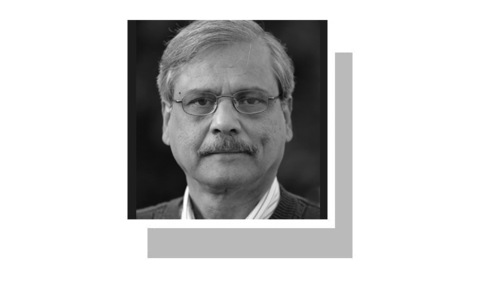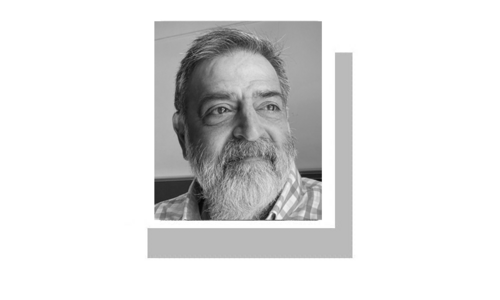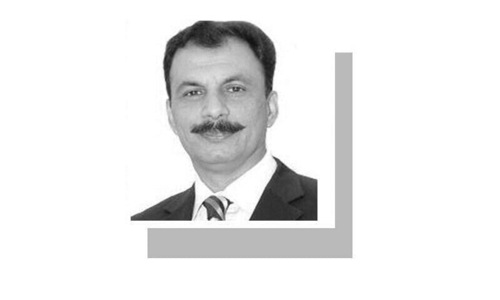Till recently, heads would turn in open curiosity on the rare occasions when a solitary Harley-Davidson would be spotted cruising the streets of Karachi. But lately, as the culture of collecting experiences rather than materials has started gaining momentum in Karachi, these sightings of Harleys and other heavy bikes have seen a slow and steady increase.
Huzaifa is a typical ‘biker boy’ who rides motorbikes not just for weekend leisure and sport but also for his daily commute. Not only does he love to ride his Yamaha 600 and Suzuki 500, he also thoroughly enjoys their upkeep and maintenance.
“I started biking at 12, when I was told not to touch the motorcycle,” he says — which may reinforce the stereotype that a heavy motorbike is indeed a rebel’s choice.
Heavy bikes, once the preserve only of the rich, are slowly making inroads on Pakistan’s streets
“Everyone has a different attraction to motor-biking. Some ride for socialising or hanging out with like-minded friends, for some it’s an avenue to show off and for others it is a stimulating activity.” For Huzaifa, the need for speed is the draw.
He groups bike-riders according to their focus: whilst the stunt lovers and exhibitionists perform their stunts on empty and easily-accessible roads such as those near Do Darya near Seaview, where spectators can marvel at them, the group of intercity riders and explorers search for different landscapes and long stretches of smooth road in far-off destinations where they can speed safely and without interruption. The thrill and charm of exploring and speeding makes all the effort and money put in this passion worthwhile for them. Inter-city rides, held mid-week and on weekends, end with dinner or coffee.
His group of about 30 riders arranges short rides, fortnightly, of 20km in and around the city. On alternate weekends they go for longer rides of 50km to 100km to places like Nooriabad and Hyderabad. Every fourth or fifth ride is a destination ride to dams and beaches such as Darawat Dam, Kund Malir, Gadani and Sonmiani. Occasionally, they ride 200km or more. Recently, there was a 1,000-km ride to Gwadar, and die-hard enthusiasts ride all the way up to the north. The peak riding season is from December to March. As summers are too hot to ride, official rides peter out to once a month.
Because of the bikes’ prohibitive purchasing and maintenance cost and because parents discourage their children from bike-riding due to safety concerns, the biker gang consists mostly of adults in their 30s and above who can manage the cost and parental dissuasion. Javaid, for instance, started motor-biking only four years ago, though he had wanted to do so since his teenage years. But heavy motorbikes come with a heavy price tag (the average cost of a good bike is between one million rupees and 1.5 million rupees), so he waited till he had saved up enough to buy a Suzuki GSX-R1000.
Badar, too, had wanted to own a motorbike since childhood, but did not have his parents’ permission. “We have all had that one daredevil, adventurous uncle or older cousin on motorbike, and we have all climbed on their bikes and begged for rides, and dreamed of having our own bikes one day,” he says.
Badar got his first driving lesson on a university friend’s Honda 125. When he moved to Australia in 2005, he bought an old Honda CBR600. That is when the love blossomed. In 2017, he drove from Islamabad to Khunjerab Pass on a Suzuki 150, along with a friend.
“It was one of the best experiences of my life,” says Badar. “Currently, I own a Harley-Davidson Dyna Street Bob and ride around Karachi and its surrounding areas. When I am on my bike, I can feel the wind, smell the air and have a 360-view of my surroundings.”
Previously, there used to be a single motorcycling group in Karachi. Now there are around six groups in the city and more than 30 groups countrywide. In Karachi, there are presently around 500 heavy bikers. Owning, riding, maintaining and upgrading imported heavy bikes is more prevalent in cities such as Islamabad, Rawalpindi, Lahore, Faisalabad, Multan and Bahawalpur, where there are approximately three times more riders because these cities have better roads and security, both of which are essential factors for riding motorbikes.
“Karachi has comparatively lesser purchasing power, and its residents also need to hide their wealth for security reasons, whereas in the other cities the prevalent culture is to flash one’s wealth, and riding a Harley is one a symbol of wealth,” explains Javaid.
The last three years particularly have seen a boom in this hobby, with increased wealth and increased social media exposure and promotion. Huzaifa explains the surge: “The thrill and freedom that comes with motorcycling has always attracted daredevils, but previously motorcycles above 200cc were not easily available in Pakistan. Importing heavy bikes was an onerous process, and the only other source was government auctions. When importing luxury goods became easier, and the law and order situation also improved since 2000, motorcycling experienced a surge with the easier availability of heavy bikes and their accessories.”
With increasing demand there is also increasing supply. More bikes are being imported and new workshops are coming up, making it easier to own and maintain heavy bikes. In the last few years, some heavy-bike showrooms have opened up in Karachi, stocking Chinese and Japanese bikes. Local assemblers such as Pak Suzuki have officially introduced a range of heavy bikes for touring. With the opening of an unofficial Harley-Davidson store, the American bike too has found its way into the market. Motorcycling gear is easily available; Sialkot has actually started manufacturing and exporting biking gear. Over one hundred shops have been set up across Pakistan offering sales, basic repair and maintenance services, like cleaning air and oil filters.
But heavy bike-riding continues to be an expensive hobby. “The Japanese and American imports have always been the rich man’s toys, mainly due to the unavailability of these bikes locally,” says Badar. “For the general public, one could only own one of these heavy bikes after the original owner had moved to a different ride and sold this one off.”
Their upkeep, too, is expensive because their spare parts are not available locally. Even the lubricants are very expensive, and only a couple of manufacturers sell these through distributors. For Japanese and American imports, monthly maintenance usually costs around 10,000 rupees to 15,000 rupees, and for local and Chinese bikes the upkeep is around 3,000 rupees. Despite the expense, the love for heavy motorbikes is permeating through all sectors of society.
“One vital aspect that motorcyclists need to focus on is safety,” Javaid says, stressing the need for safety besides the need for speed. Helmets, gloves, padded jackets, pants and boots are some of the safety gear which riders should buy with the purchase of a bike. Many riders do not wear this gear and there have been some casualties as well. Over-speeding is another downside of this hobby. It is easy to accelerate but difficult to stop, especially on Karachi roads.
“The real growth in this sport will be when women enter the arena of heavy bikes,” says Badar. “They are already riding bicycles in large numbers and there is a steadily growing number of women who are riding around the city on motorbikes. Progressing to heavy bikes is not far off.”
“Motorcycling is an experience where you learn more about yourself,” says Javaid. “It is a platform where you meet people with the same passion, hobbies and interests. You ride a bike when you want the freedom to ride and the freedom to live.”
Published in Dawn, EOS, May 6th, 2018













































